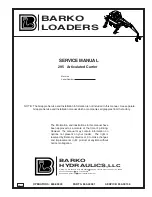
Theory of Operation— 2236 Service
Dc Restorer
The Dc Restorer circuit produces the crt control-grid bias
and couples both dc and ac components of the Z-Axis Am
plifier output to the crt control grid. Direct coupling of the Z-
Axis Amplifier output to the crt control grid is not employed
due to the high potential differences involved. Refer to Fig
ure 3-5 during the following discussion.
Ac drive to the Dc Restorer circuit is obtained from pin 16
of T948. The drive voltage has a peak amplitude of about
±100 V, a frequency of about 20 kHz, and is coupled into
the Dc Restorer circuit through C853 and R853. The cath
ode of CR851 is biased by the voltage applied from the
wiper of Grid Bias potentiometer R851, and the ac-drive
voltage will be clamped whenever the positive peaks reach a
level that forward biases CR851.
The Z-Axis Amplifier output voltage, which varies be
tween + 10 V and +75 V, is applied to the Dc Restorer at
the anode of CR853. The ac-drive voltage will hold CR853
reverse biased until the voltage falls below the Z-Axis Ampli
fier output voltage level. At that point, CR853 becomes for
ward biased and clamps the junction of CR851, CR853, and
R854 to the Z-Axis output level. Thus, the ac-drive voltage
is clamped at two levels to produce a square-wave signal
with a positive dc-offset level.
The Dc Restorer is referenced to the -2 -k V crt cathode
voltage through R858 and CR854. Initially, both C855 and
C854 will charge up to a level determined by the difference
between the Z-Axis output voltage and the crt cathode volt
age. Capacitor C855 charges from the Z-Axis output
through R858, CR854, and CR855, to the crt cathode. Ca
pacitor C854 charges through R858, CR854, R854, and
CR853 to the crt cathode.
During the positive transitions of the ac drive, from the
lower clamped level toward the higher clamped level, the
charge on C854 increases due to the rising voltage. The
voltage increase across C854 is equal to the amplitude of
the positive transition. The negative transition is coupled
through C854 to reverse bias CR854 and to forward bias
CR855. The increased charge of C854 is then transferred to
C855 as C854 discharges toward the Z-Axis output level.
Successive cycles of the ac input to the Dc Restorer will
charge C855 to a voltage equal to the initial level plus the
amplitude of the clamped square-wave input.
The added charge on C855 determines the control-grid
bias voltage. If more charge is added to that already present
on C855, the control grid becomes more negative and less
crt writing-beam current will flow. Conversely, if less charge
is added, the control-grid voltage level will be closer to the
cathode-voltage level and more crt writing-beam current
flows.
3-17
Figure 3-5. Simplified diagram of the Dc Restorer circuitry.
Summary of Contents for 2236
Page 10: ...2236 Service viii The 2236 Oscilloscope ...
Page 74: ...Theory of Operation 2236 Service 3 30 ...
Page 102: ...Performance Check Procedure 2236 Service 4 21 Figure 4 1 Test setup for DMM common mode check ...
Page 242: ...2236 Service 4204 34 Figure 9 6 CTM basic block diagram ...
Page 243: ...DMM POWER S U P P LIE S 2236 Service F ig u re 9 7 C T M d e ta ile d b lo c k diag ram ...
Page 254: ...S I 0 O I 5 1 S O i 4204 21 C IR C U IT BOARD INTERCONNECTIONS ...
Page 267: ...1 2 3 4 5 6 7 8 9 J T K L M_ _ ___ N___l _ P____l S ...
Page 271: ...1 2 3 4 5 6 7 8 9 lO P2SO O U1 A TRIGGER V T O W2500 5 A 223 R E V A P R W G ...
Page 275: ......
Page 280: ......
Page 285: ...A 6 F IL T E R B O A R D lo c a te d u n d e r H V S h ie ld ...
Page 313: ...2236 Service T O U I 3 0 0 4 8 K T O UI300 II S K 0 2 2 3 6 Z Z O A Z 2 OPTION IA ...
Page 317: ...A 10 C O U N T E R T IM E R M U L T IM E T E R B O A R D A D J U S T M E N T LO C A T IO N S ...
Page 319: ...2236 Service TROUBLESHOOTING GUIDE 4206 99 4204 69A ...
Page 323: ...9 ...
Page 324: ...2 REV APR 1986 ...
Page 325: ...2236 SERVICE ...
Page 326: ......
Page 332: ......
Page 333: ...2236 SERVICE ...
Page 334: ...2 4 2 1 ...
Page 338: ......
















































